
The Question of Keys
Collector opinion is divided about keys. Some consider a
lock complete only if it has a key, and will not purchase one without. Others
are not really interested. An original key or even a working key does enhance
desirability and value somewhat, but this is mostly a matter of individual
preference. Obviously, there are two ways to fit keys: have it done by someone
who knows what he is doing, or learn how to do it yourself. The latter requires
a considerable investment of study and time, and should be left for long winter
nights. Many collectors try to find keys for lever locks by trying out all the
lever lock keys that they have accumulated. This is sometimes successful, but is
a dangerous practice. Some locks can trap keys, leaving you with an even worse
problem. If you have a key, attach it firmly to the lock. Giveaway rings are
perfect for this, and can be purchased though a locksmith.
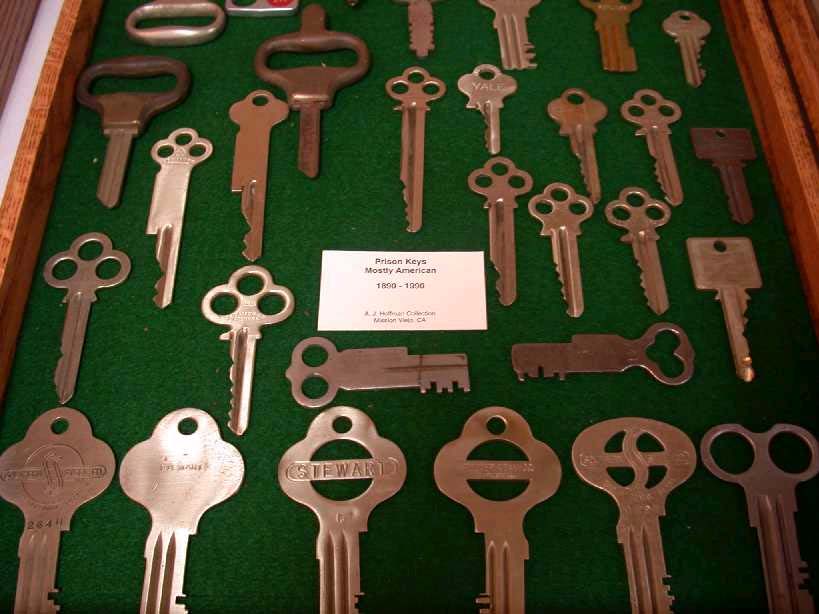
American Prison Keys, through 1900.
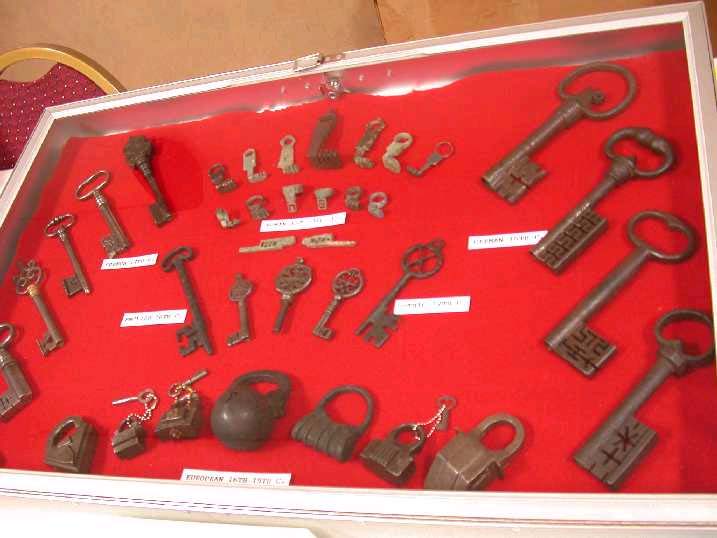
Ornate English Keys
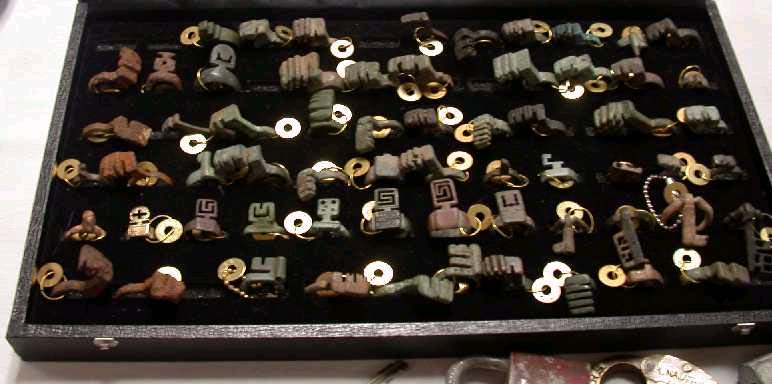
Roman ring keys
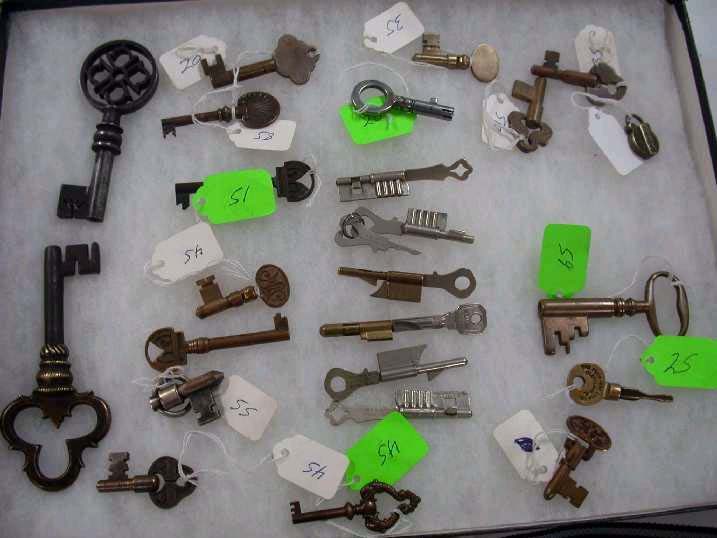
Barrel keys, skeleton lockout keys, cabinet keys - 1880's
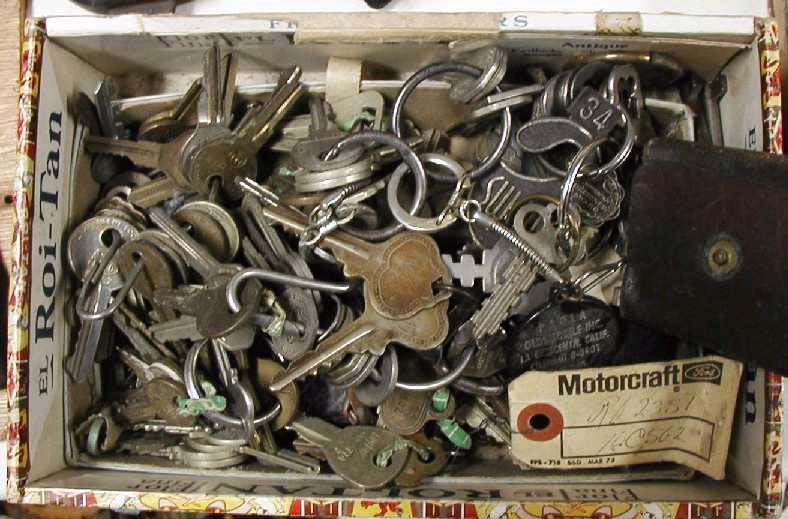
You never know what's at the bottom!
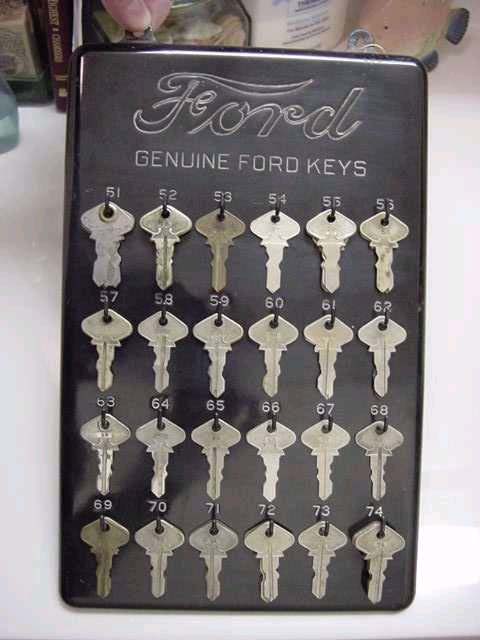
A more organized look for displaying keys.
Pennsylvania Dutch locks were everywhere on barns and farmhouses in Lancaster Co. and surrounding area in the early and middle 1800's. It has been said that Linus Yale Jr. would have seen these wooden tumbler locks that the settlers had brought over from Scotland, Germany and Switzerland. Perhaps this influenced his thinking in the development of the pin-tumbler lock during 1857-1860 and patented in 1861.
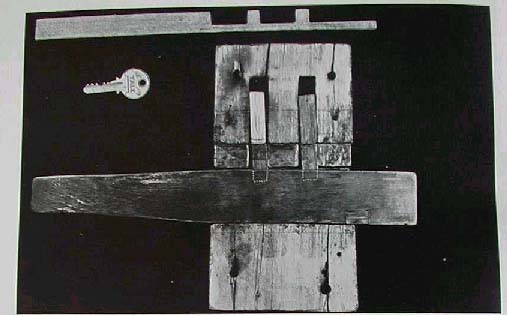
This is a Pennsylvania Dutch wooden lock and key compared to a modern Yale key.
The case of the wooden lock was attached to the door by four wooden screws.
Tumblers inserted in two grooves in the case are penetrating partly into the
heavy bolt. The mechanism is locked. The tumblers are fastening the lock case
and bolt together.
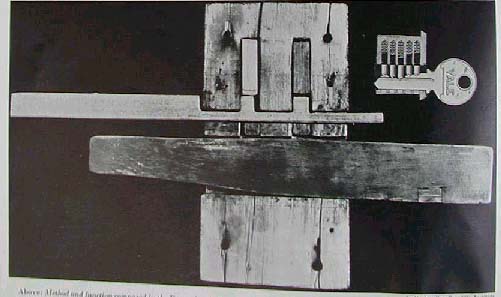
This picture shows the Pennsylvania Dutch wooden lock and key, and the Yale lock
and key both inserted and mechanisms unlocked. In the wooden lock, the key is
lifted, raising the tumblers so that they no longer block the bolt. The modern
Yale lock is shown in the same position: the key aligns the tumblers. The more
complicated revolving movement was solved by Yale but the Pennsylvania Dutch
Lock never evolved to that level.
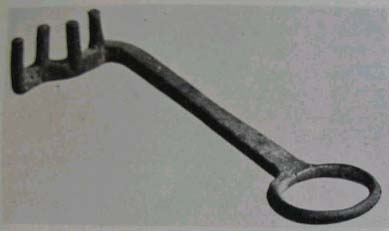
Iron Key from the post-Egyptian period 330 BC.